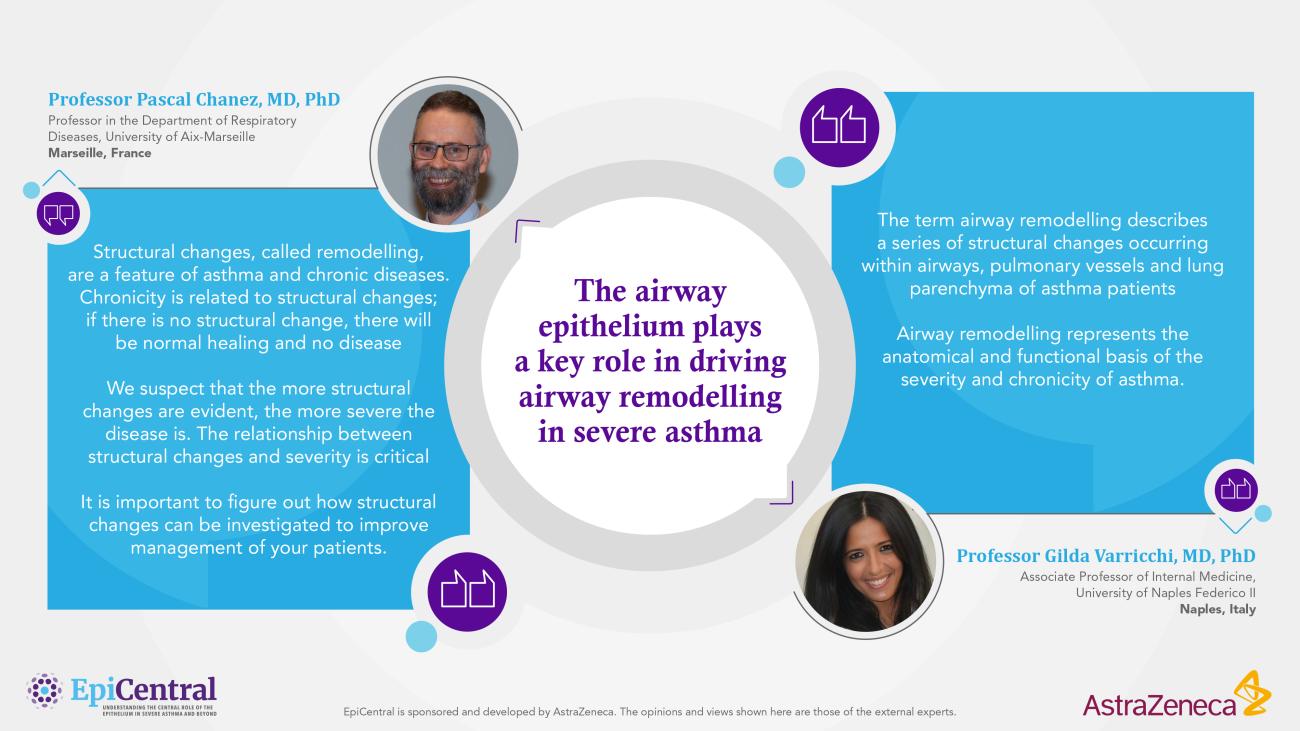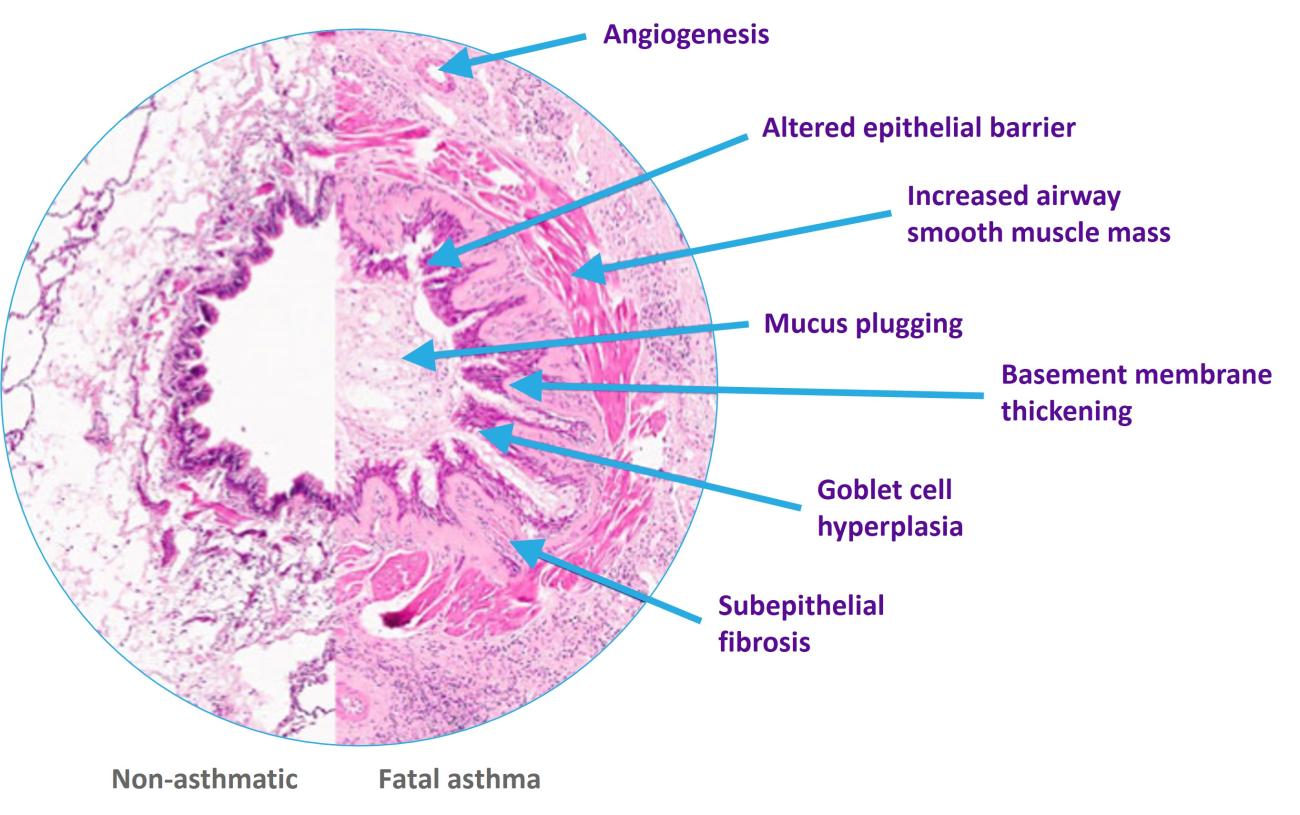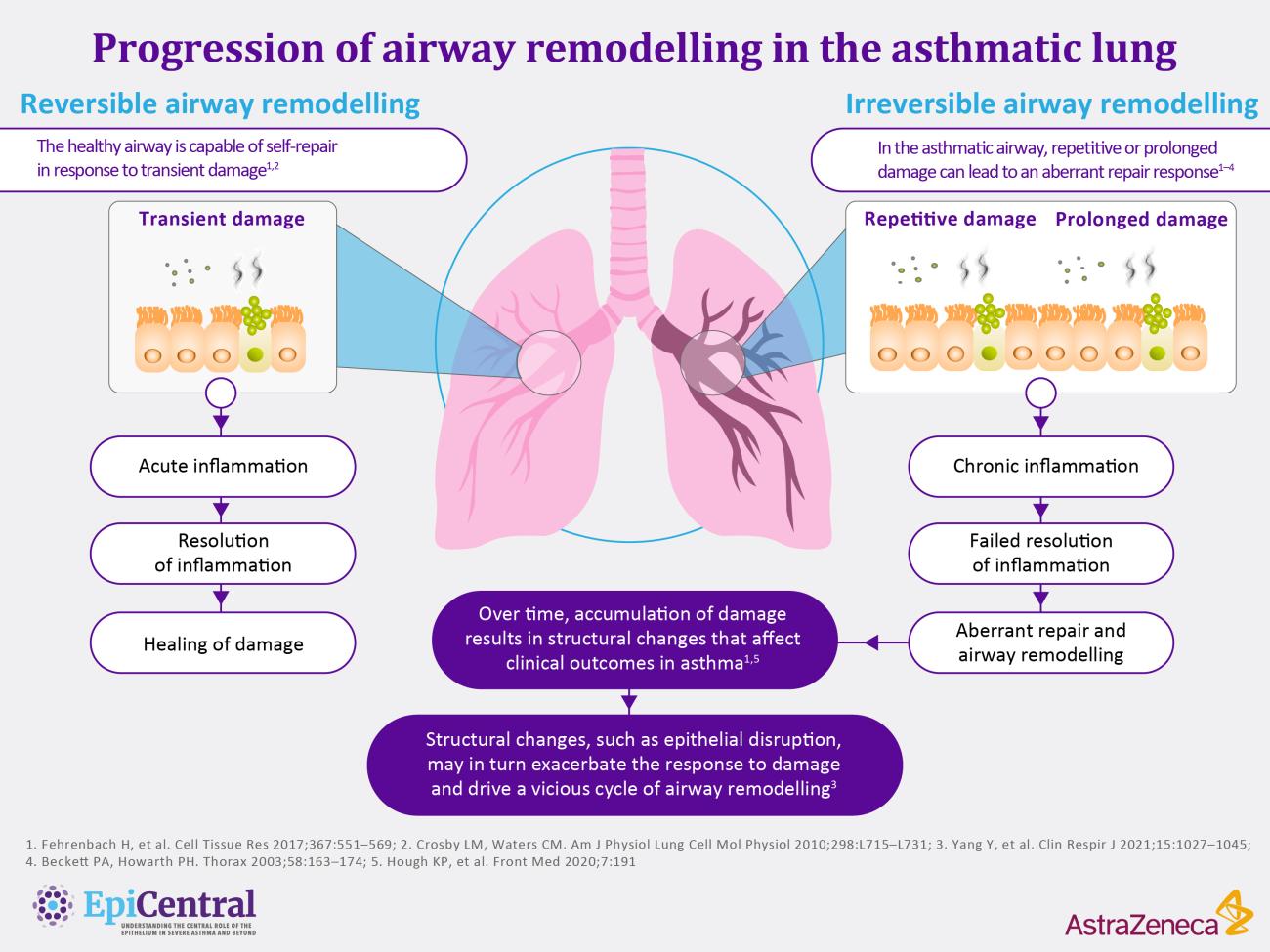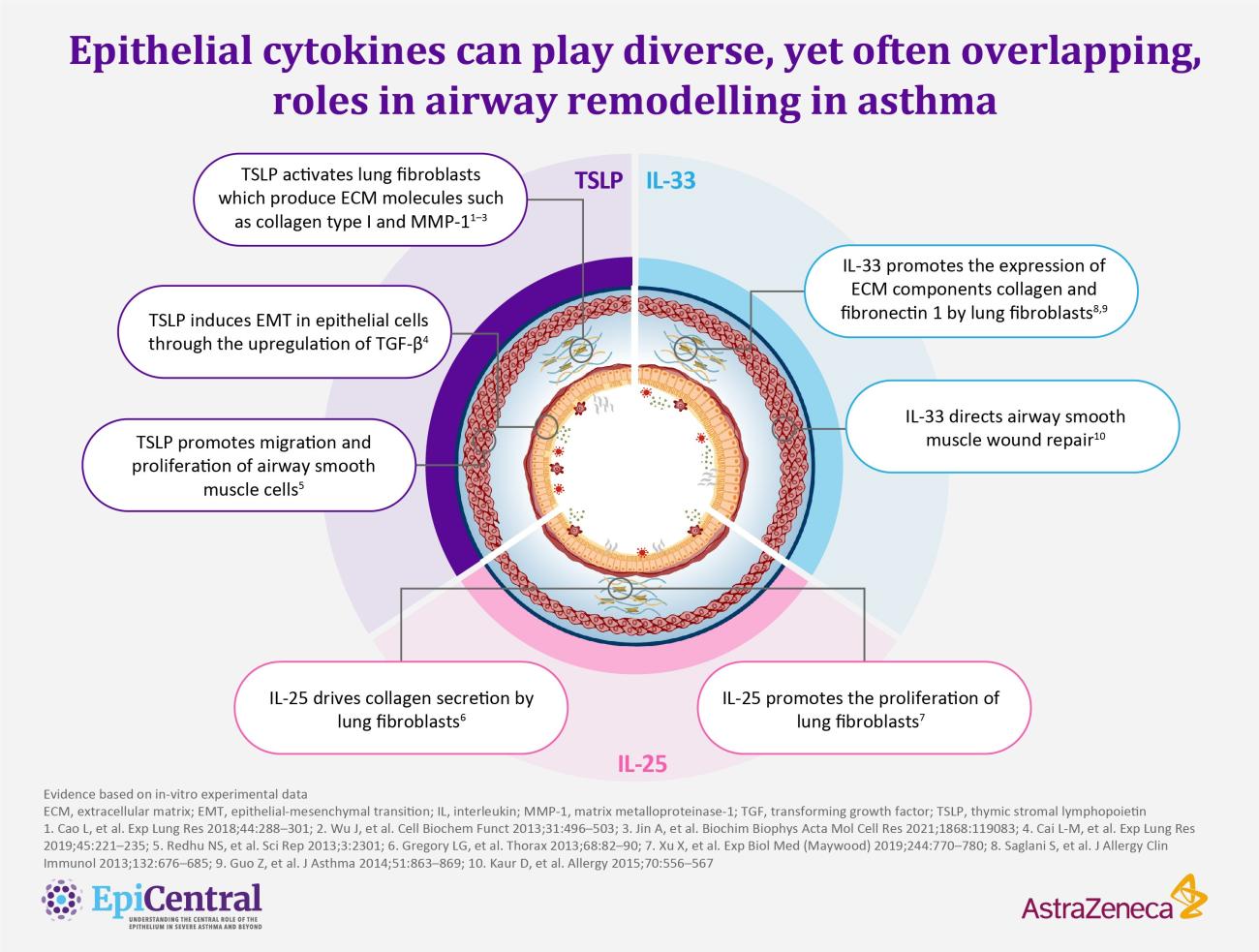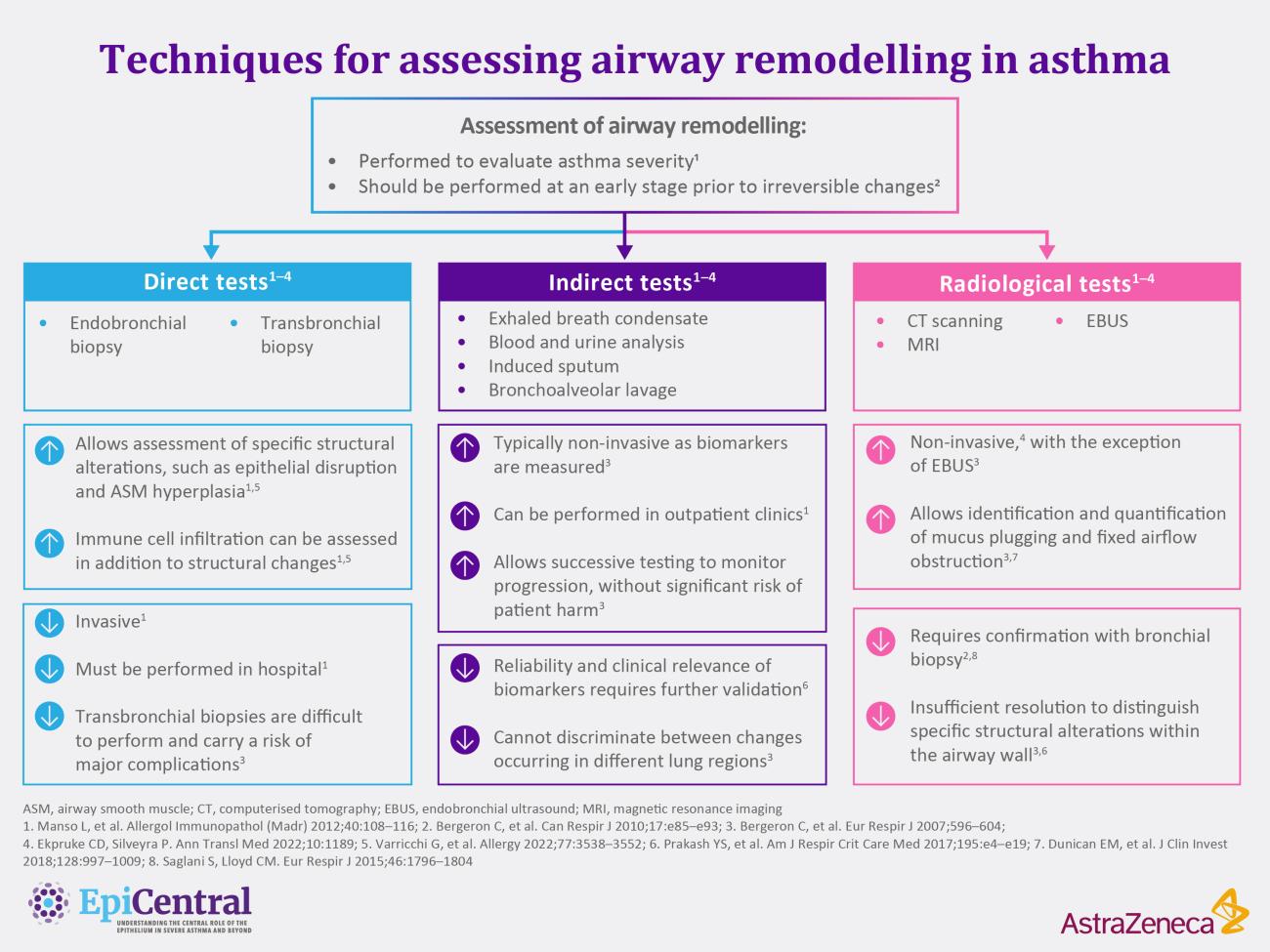References
1. Hough KP, et al. Front Med (Lausanne) 2020;7:191; 2. Yang Y, et al. Clin Respir J 2021;15:1027–1045; 3. Beckett PA, Howarth PH. Thorax 2003;58:163–174; 4. James AL, Wenzel S. Eur Respir J 2007;30:134–155; 5. Hsieh A, et al. Front Physiol 2023;14:1113100; 6. Varricchi G, et al. Allergy 2022;77:3535–3552; 7. Samitas K, et al. Allergy 2018;73:993–1002; 8. Gauvreau GM, et al. Allergy 2023;78:402–417; 9. Thomas D, et al. Eur Respir J 2022;2102583; 10. Fehrenbach H, et al. Cell Tissue Res 2017;367:551–569; 11. Brightling CE, et al. Clin Exp Allergy 2012;42:638–649; 12. Krings JG, et al. J Allergy Clin Immunol 2021;148:752–762; 13. Zhang J, Dong L. J Thorac Dis 2020;12:6090–6101; 14. Gras D, et al. Med Sci (Paris) 2011;27:959–965; 15. Gupta S, et al. Chest 2009;136:1521–1528; 16. Calvén J, et al. Int J Mol Sci 2020;21:8907; 17. Heijink IH, et al. Allergy 2020;75:1902–1917; 18. Davies DE. Proc Am Thorac Soc 2009;6:678–682; 19. Barbato A, et al. Am J Respir Crit Care Med 2006;174:975–981; 20. Saglani S, et al. Am J Respir Crit Care Med 2007;176:858–864; 21. Saglani S, Lloyd CM. Eur Respir J 2015;46:1796–1804; 22. Takizawa H. Respir Med CME 2008;1:69–74; 23. Joseph C, Tatler AL. J Asthma Allergy 2022;15:595–610; 24. Dunican EM, et al. Ann Am Thorac Soc 2018;15:S184–S191; 25. Chanez P, et al. Am J Respir Crit Care Med 1999;159:588–595; 26. Fokkens W, Reitsma S. Otolaryngol Clin North Am 2023;56:1–10; 27. Sozener ZC, et al. Allergy 2022;77:1418–1449; 28. Bartemes KR, Kita H. Clin Immunol 2012;143:222–235; 29. Jackson DJ, Lemanske RF. Immunol Allergy Clin North Am 2010;30:513–522; 30. Crosby LM, Waters CM. Am J Physiol Lung Cell Mol Physiol 2010;298:L715–L731; 31. Grainge CL, et al. N Engl J Med 2011;364:2006–2015; 32. Tschumperlin DJ, Drazen JM. Am J Respir Crit Care Med 2001;164:S90–S94; 33. Chapman DG, Irvin CG. Clin Exp Allergy 2015;45:706–719; 34. Comberiati P, et al. Immunol Allergy Clin North Am 2018;38:545–571; 35. Yang D, et al. Immunol Rev 2017;280:41–56; 36. Cao L, et al. Exp Lung Res 2018;44:288–301; 37. Wu J, et al. Cell Biochem Funct 2013;31:496–503; 38. Jin A, et al. Biochim Biophys Acta Mol Cell Res 2021;1868:119083; 39. Saglani S, et al. J Allergy Clin Immunol 2013;132:676-685.e13; 40. Guo Z, et al. J Asthma 2014;51:863–869; 41. Gregory LG, et al. Thorax 2013;68:82–90; 42. Xu X, et al. Exp Biol Med (Maywood) 2019;244:770–780; 43. Redhu NS, et al. Sci Rep 2013;3:2301; 44. Kaur D, et al. Allergy 2015;70:556–567; 45. Cai L-M, et al. Exp Lung Res 2019;45:221–235; 46. Ojiaku CA, et al. Am J Respir Cell Mol Biol 2017;56:432–442; 47. Osei ET, et al. Cells 2020;9:1694; 48. Türkeli A, et al. Exp Ther Med 2021;22:689; 49. Roan F, et al. J Clin Invest 2019;129:1441–1451; 50. Porsbjerg CM, et al. Eur Respir J 2020;56:2000260; 51. Galli SJ, Tsai M. Nat Med 2012;18:693–704; 52. Robinson DS. J Allergy Clin Immunol 2004;114:58–65; 53. Brightling CE, et al. N Engl J Med 2002;346:1699–1705; 54. Suto W, et al. Int J Mol Sci 2018;19:3036; 55. Woodman L, et al. J Immunol 2008;181:5001–5007; 56. Comeau MR, Ziegler SF. Mucosal Immunol 2010;3:138–147; 57. Saunders R, et al. Clin Transl Immunology 2020;9:e1205; 58. Saunders R, et al. J Allergy Clin Immunol 2009;123:376–384; 59. Tatler AL, et al. J Immunol 2011;187:6094–6107; 60. Sutcliffe A, et al. Thorax 2006;61:657–662; 61. Moir LM, et al. J Allergy Clin Immunol 2008;121:1034–1039; 62. Gras D, et al. Eur Respir J 2017;49:1602399; 63. Bergeron C, et al. Can Respir J 2010;17:e85–e93; 64. Manso L, et al. Allergol Immunopathol (Madr) 2012;40:108–116; 65. Witt CA, et al. Acad Radiol 2014;21:986–993; 66. Gautam Y, et al. J Pers Med 2022;12:66; 67. Baldassi D, et al. Adv Nanobiomed Res 2021;1:2000111.
